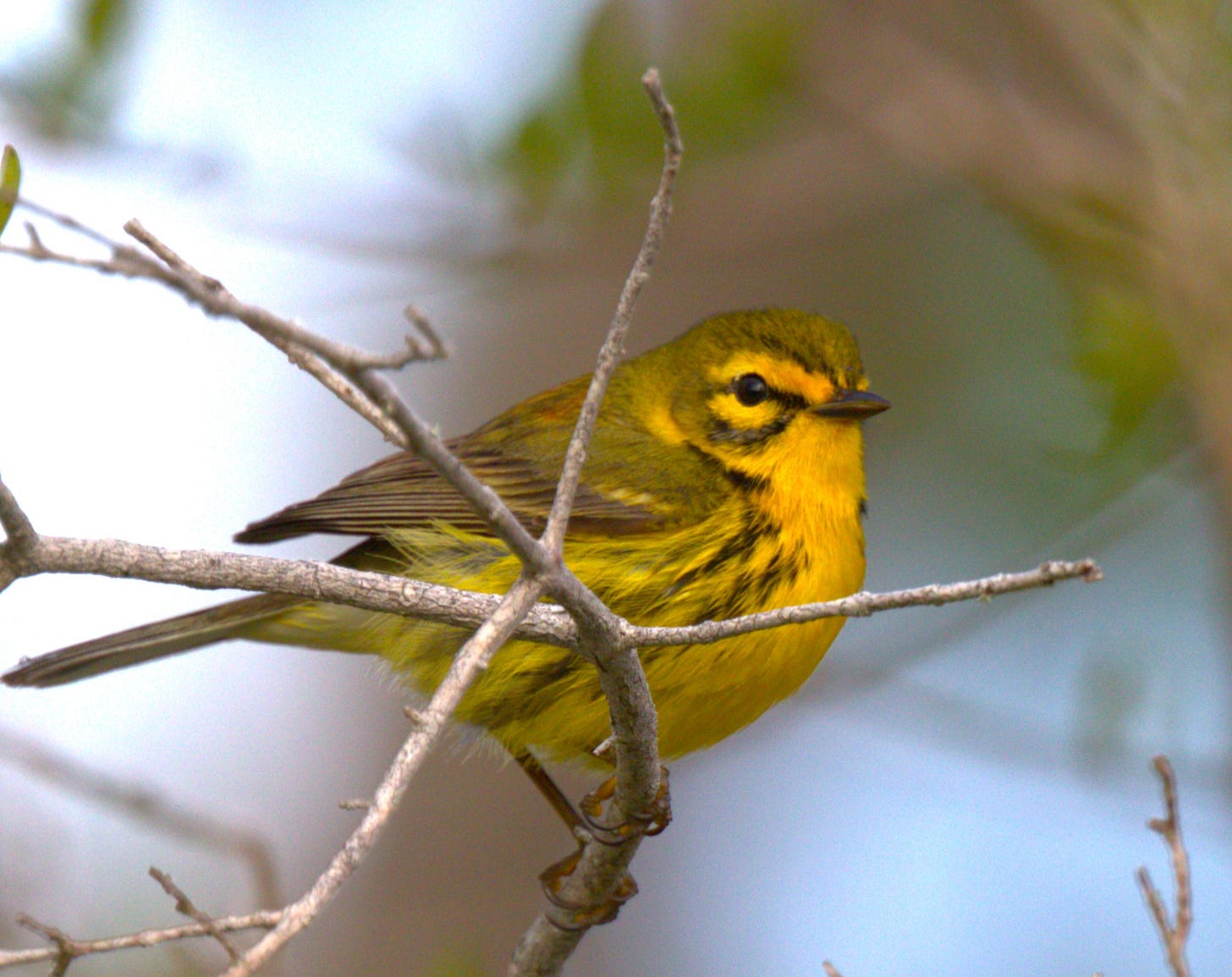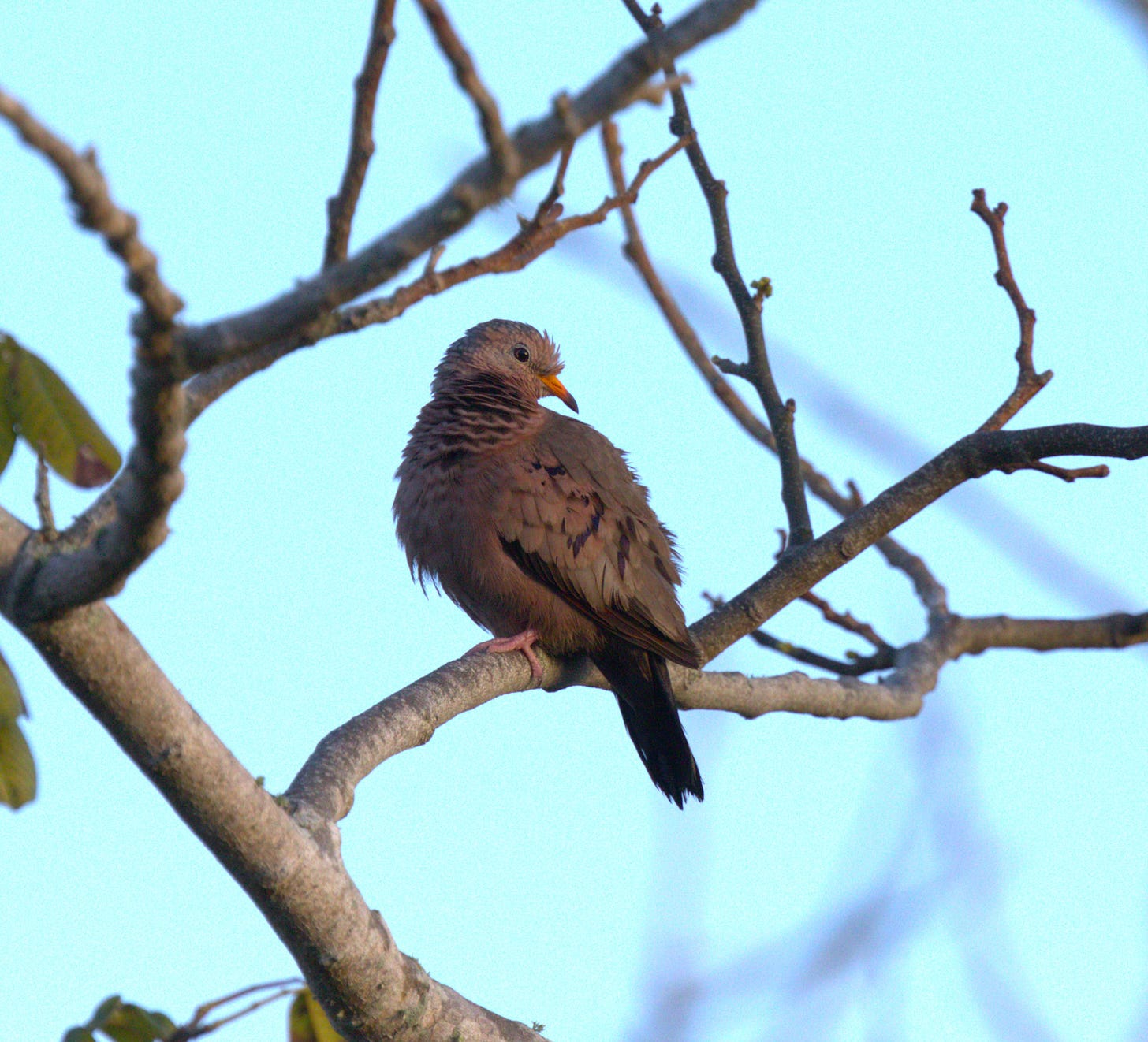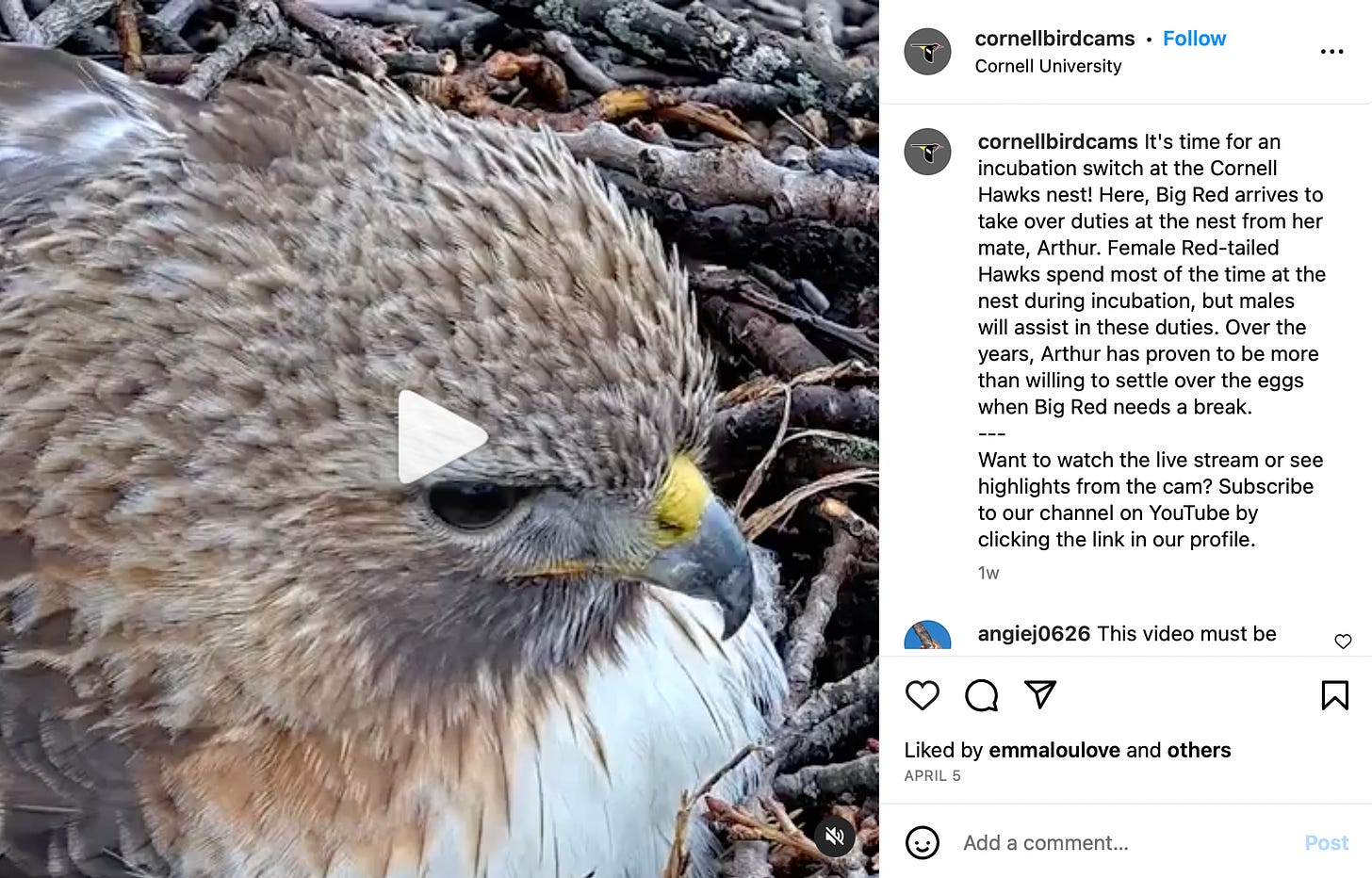Bird News Items is free to read, but depends on the generosity of its subscribers to keep the ship afloat. Please consider making a contribution of $25, $50 or $100 for an annual subscription. Click on the button below:
1. Bald Eagles and dairy farmers – it’s complicated (but “important to understand”): A recently-published study, “A Win-Win Between Farmers and an Apex Predator: Investigating the Relationship Between Eagles and Dairy Farms,” by Ethan Duvall grad investigates the relationship between dairy farmers and bald eagles. This newly-discovered relationship will increase human-bald eagle interactions across various contexts. Duvall, who studies ecology and evolutionary biology, began his research in Washington state, where he found that bald eagle populations concentrated around the Nooksack River migrated to nearby dairy farms. The dairy industry produces natural byproducts, such as cow placenta and carcasses. Although waste to the farmers, these byproducts offer nutrients and energy to eagles when they are unable to find the food they need at the river. (via The Cornell Daily Sun)
2. Speaking of Bald Eagles, meet Murphy: Never give up on your dreams. A seemingly confused bald eagle at a Missouri wildlife sanctuary has captured hearts across the internet after meticulously building a nest around a rock and vigilantly guarding it. A visitor of the World Bird Sanctuary in Valley Park posted a now-viral tweet on Saturday that showed an image of Murphy sitting on the ground. A photo of a sign posted on his enclosure read, “Murphy is not hurt, sick, or otherwise in distress. He has built a nest on the ground, and is very carefully incubating a rock! We wish him the best of luck!” Though Murphy’s situation is unique, it’s not unusual for male bald eagles to take an active role in parenting. They assist in incubating eggs and, once eaglets are hatched, help provide food and guard the nest. But as a single rock dad, Murphy’s doing just fine. (via The Huffington Post, The Star Tribune)
3. Migration, climate and risk – an interesting study: Deteriorating habitat conditions caused by climate change are wreaking havoc with the timing of bird migration. A new study demonstrates that birds can partially compensate for these changes by delaying the start of spring migration and completing the journey faster – but the strategy comes with a decline in overall survival. “We found that our study species, the American redstart, can migrate up to 43% faster to reach its breeding grounds after delaying departure from wintering grounds in Jamaica by as much as 10 days,” said Bryant Dossman, Ph.D. ’21, lead author of “Migratory Birds With Delayed Spring Departure Migrate Faster But Pay the Costs”. “But increased migration speed also led to a drop of more than 6% in their overall survival rate,” said Dossman, who led the study while at Cornell and is currently a postdoctoral fellow at Georgetown University. (via Cornell Chronicle)
4. “This worries us substantially”: Red-throated loons — a type of water bird that ancient Gaels relied on to predict the weather — are so avoidant of offshore wind turbines in the North Sea that their numbers declined significantly in the immediate vicinity, adding to concerns about balancing the world’s push for renewable energy with the need to protect biodiversity. The study, published Thursday in Scientific Reports, investigated how the abundance of the birds had changed since 14 offshore wind farms were constructed in the southeastern waters of the North Sea. Using data collected from ships, aircraft and digital aerial surveys each year during March and April, the researchers recorded a downward pattern from 2010 to 2017. (via Bloomberg)
5. All that rain has been transformative for wildlife in southern California: After years of dusty, dry hillsides, much of Southern California has turned green from record-breaking rain and snow this winter, which wildlife experts say has already started to improve habitats and populations for certain species — a trend they expect to reverberate through the entire landscape. That is likely to mean the region will be populated with more squirrels, rabbits, rats and snakes — although, in some cases, it could take several months or longer to see the resulting surge in wildlife. “This year had just been transformative throughout the region, just the amount of growth of everything,” said Daniel Cooper, a senior conservation biologist at the Resource Conservation District of the Santa Monica Mountains. (via Los Angeles Times)
6. Great year for Annie and Lou – read on: The raptor world is eagerly watching UC Berkeley's peregrine falcon live webcam after three eggs hatched earlier in the week, with one left to go. The falcon family is perched atop the Campanile, or the university's clock tower, with parents Annie and Lou taking turns keeping the eggs and newest chicks warm. Typically, Annie hatches three eggs. If all eggs hatch, it would be a first for Annie, who Tim Stroshane says has been hatching eggs on top of Campanile since 2017. Stroshane is a volunteer with Cal Falcons. He and his wife began volunteering for recovery groups in the 1970s when the couple first worked with the Predatory Bird Research Group at UC Santa Cruz. (via KCRA News)
7. Poisonous wings: Birds likely aren't the first things that spring to mind when you think of poisonous animals, but two common species in Papua New Guinea have been found hoarding a toxic arsenal in their feathers. The regent whistler (Pachycephala schlegelii) and rufous-naped bellbird (Aleadryas rufinucha) have been caught in possession of a potent neurotoxin. Batrachotoxin causes muscle cramps and near-instantaneous cardiac failure on contact at high levels. The brightly colored birds store a metabolized version of the poison in their feathers, creating a nasty surprise for any predator that dares have a taste. (via Science Alert)
8. More than one way to carry water in the desert: An up-close look at the belly feathers of a desert bird reveals complex coiled structures that absorb and trap water, allowing Namaqua sandgrouse to transport water inside their plumage. Male Namaqua sandgrouse (Pterocles namaqua) make daily trips to watering holes in South Africa, where they soak their lower feathers in water. The water-logged birds then fly up to 30 kilometres to their thirsty young, which suck water from their father’s feathers. Researchers first discovered that these feathers had coiled filaments called barbules more than 50 years ago. But no one had taken a closer look. (via New Scientist)
9. Audubon’s Earth Day message: Our expertise in studying birds leaves no doubt that climate change affects the habitats they need to survive. As our Survival By Degrees report shows, two-thirds of North American bird species could face extinction if we fail to slow the rate of global temperature rise. Some “tipping point” species, like the Rufous Hummingbird and Golden-winged Warbler, are on track to suffer more acutely. Birds can’t simply move to different climates, since our planet is changing so quickly that they don’t have enough time to adapt—even in places like our National Wildlife Refuge system. This year’s Earth Day comes soon after the United Nations’ “final” Intergovernmental Panel on Climate Change (IPCC) report. (via Audubon)
10. A bumper breeding season for endangered bitterns in UK: The UK’s loudest bird has had a bumper breeding year after previously being driven to extinction in the country. Bitterns became locally extinct in the 1870s due to persecution and draining of their wetland habitat for agriculture. Now the RSPB has revealed that thanks to conservation work, the bird, which has a distinctive “booming” call, has had one of its most successful breeding seasons. The wetland-dwelling birds depend on reedbed habitats, where they move, camouflaged, to hunt fish, insects and amphibians. (via The Guardian)
11. Tipsy waxwings - really?: Wildlife officials have an important message entering spring: Don’t drink and fly. Experts warned that some birds may be a little tipsy this season. Some bird species, notably cedar waxwings and American robins “often eat fruit that has started to rot and ferment,” officials said. When fruits ferment, they produce alcohol, the post said. “Most birds likely just get a bit tipsy, and very few people would be able to pick them out as intoxicated,” Meghan Larivee, laboratory coordinator for Environment Yukon, told National Geographic. “However, every now and then, some birds just overdo it.” (via The State)
12. A primer on Purple Martins: When we drove into the parking lot at Delaware’s Bombay Hook National Wildlife Refuge, it was midday in the middle of summer — a notoriously poor time for birding. Nevertheless, as Pat emerged from the car, she noted the presence of a purple martin house off to the right. “Well, that was easy,” she said, putting a checkmark next to the first species on our checklist. Martins were in constant motion, landing on the structure and immediately darting into one of the dozen nesting holes. Moms and dads alike, bills filled with insects, were busy feeding their hungry, fast-growing chicks. A moment later, they would emerge and rush off into the summer heat, hunting for the next insect. Atypically, they feed their babies one at a time. With most birds, the largest chick bullies its way to the front of the chow line. The unusual feeding behavior is just one of several fascinating characteristics of this bird. (via The Bay Journal)
13. A fun pic and short piece on “cavorting cranes” in Wyoming: Sure signs of spring in Wyoming: dusty wind, wet snowstorms and the arresting appearance of long-legged but elegant sandhill cranes in marshes and agricultural landscapes. John Campbell, a photographer and retired professor, captured the latter dancing in a field near Powell in late March. The graceful leaping and hopping is one of their hallmarks, along with an otherworldly, rattling call. “The cranes really are fun to watch and a joy to hear,” he wrote in an email to WyoFile. “They are such wonderfully comic birds.” Campbell has been counting sandhill cranes and other birds through Cornell University’s eBird program since 2016 when he retired from a career teaching science courses at Northwest College. (via WyoFile)
14. Philly’s “In Color Birding Club”: Bernie Wilson is a 70-year-old retired English professor and a longtime “birder.” More specifically, he’s an avid bird photographer and lifelong outdoorsman. But it wasn’t until a few years ago, when the Germantown resident (his wife, really) happened upon Philly’s In Color Birding Club (ICBC) on Instagram that he saw himself as a member of a birding community. ICBC brings together birders from different walks — especially BIPOC like Wilson — for a single purpose: Enjoying some birds. They were interracial. There were various sexual identities.; there were young people; there were old people. Today, In Color Birding has become a second family for Wilson and dozens more BIPOC and “other” identifying birders, naturalists and interested parties who want to enjoy the outdoors — and birds — together, safely and joyfully. (via The Philadelphia Citizen)
15. Finally, who you gonna call when you need to disperse all those Canada Geese?: In 1998, Robert Young and his dog, Boomer, were visiting a golf course in New Jersey when a man asked Mr. Young for his business card. Mr. Young, a physician assistant at the time, handed him a card for orthopedic work, but the man was confused. “He just kind of looked at my card and he goes, ‘Don’t you chase geese for a living?’” Mr. Young said. At this point, Mr. Young looked down at Boomer. His Border collie had chased gaggles of honking, excreting Canada geese from the course just minutes earlier. And hence, his new business Geese Chasers — one of many goose-chasing businesses across the country — was born. The company, which Mr. Young runs with his wife, Deborah Young, now has a presence in 10 states and hundreds of towns and cities, including New York City, where a dog can sometimes be spotted clearing Central Park. (via The New York Times)
Bird Photo of the Week
Photo by Hap Ellis, Rose-breasted Grossbeak - Leffis Key, Bradenton Beach, FL.
Bird Videos of the Week
Video by Unpin Studios, “100 Birds of the Northeast (U.S.) | Test”
Cornell Live Bird Cam - Owl Parents.
Cornell Live Bird Cam - Hawk Watch.









